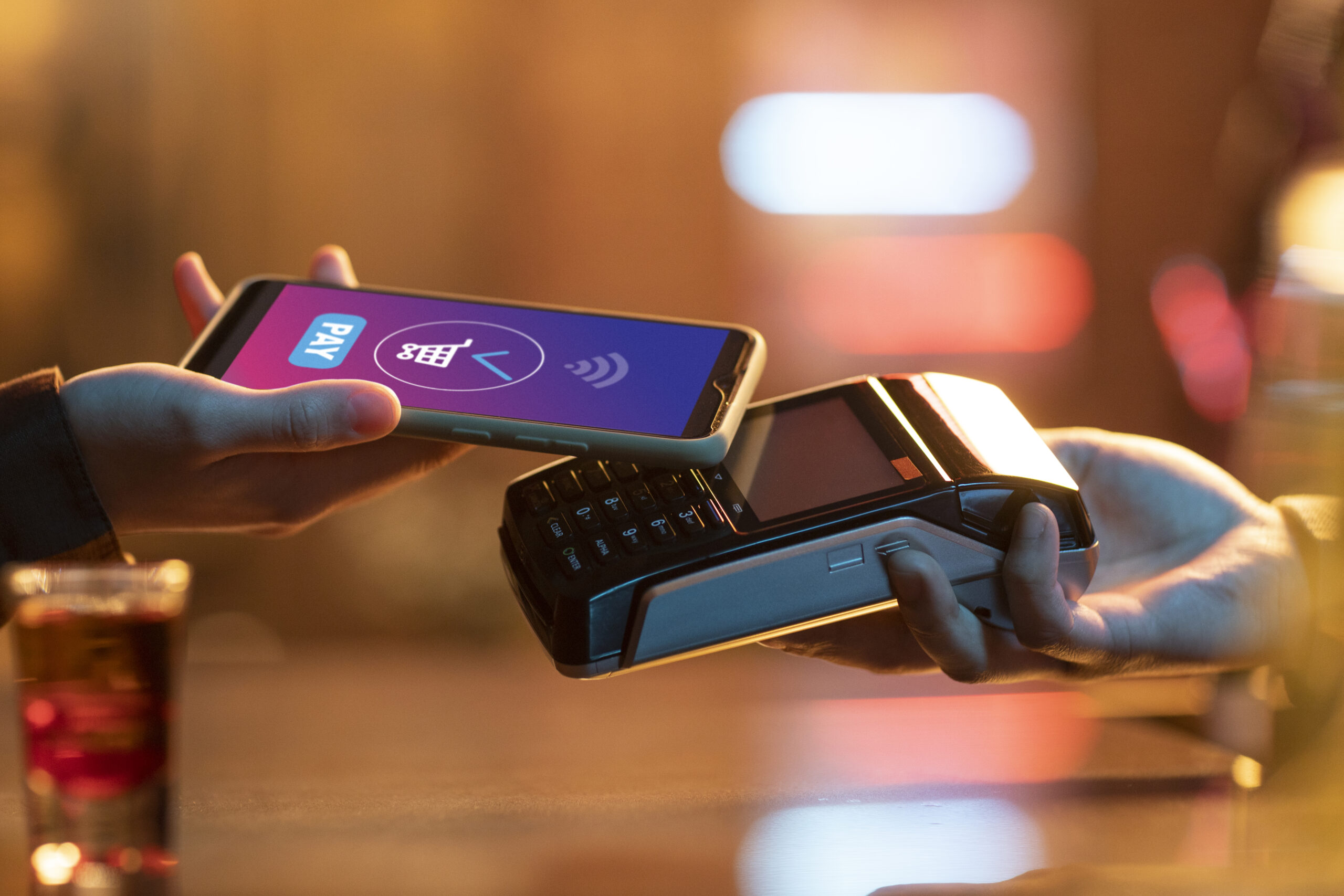Influencer marketing has emerged as a transformative force in brand promotion, redefining how businesses connect with their audiences. By leveraging the reach and trust of social media influencers, brands can effectively amplify their message, driving engagement and sales.
This strategy capitalizes on the credibility influencers have with their followers, making it a powerful tool for brands looking to enhance their online presence and market penetration. Its importance cannot be overstated, as it opens up new channels for authentic communication and engagement with potential customers.
The article will cover key aspects of influencer marketing, including its definition and significance in the current marketing landscape. Readers will gain insights into selecting the right influencers for their brand, the steps to crafting a successful influencer marketing strategy, and how to engage and collaborate with influencers to maximize campaign outcomes.
Furthermore, it will delve into the management and evaluation of influencer campaigns, highlighting common pitfalls and how to avoid them. This roadmap offers a comprehensive guide for brands aiming to leverage influencer marketing for competitive advantage.
What is Influencer Marketing?
Influencer marketing is a dynamic strategy that involves partnering with individuals who have the ability to sway the opinions and purchasing decisions of potential buyers. These influencers include social media personalities with sizable online followings as well as athletes and celebrities. The core of influencer marketing lies in leveraging the trust and credibility these individuals have with their audience to promote products, services, or brands.
Historical Context
The roots of influencer marketing trace back to the 18th century, beginning with English potter Josiah Wedgwood, who gained a royal endorsement that significantly boosted his brand’s prestige. This early instance of influencer marketing set a precedent for using high-profile endorsements to influence public perception and consumer behavior.
Over the centuries, this tactic evolved, incorporating endorsements from fictional characters like Santa Claus in Coca-Cola’s advertising, to celebrities and athletes in modern times. The rise of mass media and, subsequently, social media, has continually expanded the scope and impact of influencer marketing.
Current Trends
Today, influencer marketing has adapted to the digital age, with social media platforms like Instagram and YouTube leading the charge. These platforms provide a visual and interactive medium for influencers to engage with their audience, making them ideal for brand partnerships.
The recent emergence of micro-influencers, who typically have smaller, but highly engaged followings, has introduced a new dimension to influencer marketing. These individuals are often perceived as more authentic and relatable, which can lead to higher engagement rates. The core of influencer marketing lies in leveraging the trust and credibility these individuals have with their audience to promote products, services, or brands. Additionally, the integration of advanced analytics and artificial intelligence in influencer marketing allows for more targeted and effective campaigns, ensuring that brands reach their ideal audience through the most influential voices.
How to Choose the Right Influencer?
Choosing the right influencer for your brand involves a strategic approach, focusing on various influencer metrics and understanding the different types of influencers available. This guarantees that the influencer you choose can successfully communicate the message of your company to your target audience and truly connect with them.
Understanding Different Types of Influencers
Influencers are typically categorized by the size of their following. These categories range from nano influencers, who have between 1,000 to 5,000 followers, to celebrity influencers with over a million followers. Each category serves different marketing needs.
Nano and micro-influencers, for example, often boast higher engagement rates due to their more personal connection with their audience, making them ideal for brands looking to create authentic interactions. On the other hand, macro and celebrity influencers provide a vast reach, which can be beneficial for broad-market branding and recognition.
Selecting Influencers Based on Metrics
When selecting influencers, it’s crucial to analyze key performance metrics that go beyond mere follower counts:
- Engagement Rate: This metric, usually calculated as the total engagements divided by the total number of followers, provides insights into how actively involved an influencer’s audience is with their content. A higher engagement rate often indicates a more loyal and attentive audience.
- Reach and Impressions: Reach indicates the total number of unique viewers of the influencer’s content, while impressions track how often the content appears in someone’s feed. These metrics help assess the potential visibility of your brand’s message.
- Authenticity and Audience Realness: Tools like Upfluence can assess the percentage of an influencer’s followers who interact with their content, helping to identify authentic influencers. A realness score above 90% is generally a positive indicator.
- Branded Content Frequency: Evaluating how often an influencer posts sponsored content can help you understand their audience’s potential fatigue level. Influencers who maintain a balanced mix of organic and sponsored posts are less likely to alienate their followers.
- Performance of Branded vs. Organic Posts: It’s important to compare how sponsored posts perform relative to organic content. Effective influencers maintain or exceed their engagement levels even with branded content.
By carefully considering these metrics and understanding the different types of influencers, brands can make informed decisions that align with their marketing objectives and resonate with their target audience. This strategic approach not only enhances the effectiveness of influencer marketing campaigns but also maximizes the return on investment.
Steps to Creating an Influencer Marketing Strategy
To effectively harness the power of influencer marketing, brands must meticulously plan and execute their strategies. Here are the critical steps involved:
Goal Setting
Defining clear and measurable goals is the cornerstone of any successful influencer marketing strategy. Brands should identify what they aim to achieve through their campaigns—be it increasing brand awareness, driving engagement, or boosting sales. For instance, Dunkin’ Donuts collaborated with influencer Charli D’Amelio to increase app downloads, demonstrating a focused approach to goal setting.
It is vital to determine specific outcomes and KPIs to gauge success. Whether the objective is to enhance lead generation or strengthen customer loyalty, having well-defined goals ensures that every aspect of the campaign is aligned with the brand’s overall objectives.
Budget Planning
Establishing a budget is crucial for managing the financial aspects of influencer campaigns. The budget will influence decisions regarding the number of influencers to engage, the type of influencers, and the platforms on which to activate the campaign. Factors such as influencer compensation, whether monetary or through perks like free products or VIP benefits, play a significant role in budget allocation.
For example, micro-influencers might be compensated with products valued between $50 and $250 for single posts, while macro-influencers or celebrities may command higher fees. Additionally, brands should consider the costs associated with influencer marketing software and potential paid media to amplify influencer content. Planning a budget that accommodates these elements while aiming for a high ROI is essential for the campaign’s success.
By focusing on these foundational steps, brands can create influencer marketing strategies that not only meet their marketing objectives but also maximize their investment.
Connecting and Collaborating with Influencers
To maximize the impact of influencer partnerships, it’s crucial that their content aligns seamlessly with your brand’s image and story. Authenticity plays a vital role in building trust between the influencer’s audience and your brand, thereby enhancing the credibility of their endorsements.
Before initiating a partnership, verifying an influencer’s credibility is essential since the ease of faking social media popularity can compromise the authenticity of your campaign. Utilize tools like Upfluence to assess the realness of an influencer’s followers and engagement.
Engagement Techniques
Engaging with influencers on social media is a powerful strategy to boost your brand’s visibility and credibility. Establish clear objectives and comprehend the preferences of your target audience first.
This clarity will help you identify influencers who not only have a significant following but also share your brand values and vision. Building a genuine relationship is key; interact with potential influencers by following their accounts, engaging with their posts, and showing appreciation for their content. This initial rapport sets the stage for a more authentic collaboration.
Content Collaboration Ideas
Consider various collaboration formats to keep the content dynamic and engaging. Sponsored posts, user-generated content (UGC), and product reviews are effective ways to showcase your products through the influencer’s platform. For a more interactive approach, consider co-hosting webinars or podcasts, which can significantly enhance your brand’s reach and engagement.
Product collaborations, where influencers help design or promote a new product line, can also be particularly effective in generating buzz and excitement. Always allow influencers the creative freedom to present your brand in a way that resonates with their audience, ensuring the content remains genuine and impactful.
By setting clear expectations and maintaining open communication, you can ensure that both your brand and the influencers you collaborate with work towards a common goal, maximizing the effectiveness of the campaign and achieving desired outcomes.
Managing and Evaluating Influencer Campaigns
Managing influencer campaigns effectively and evaluating their success are crucial steps in influencer marketing. Brands can leverage specialized tools and resources to streamline these processes, ensuring they maximize the impact of their campaigns.
Tools and Resources
Several platforms offer comprehensive solutions for managing influencer campaigns. Influencity, for instance, is an all-in-one influencer management software that helps brands find, analyze, and organize influencers. It also allows for managing campaigns, setting up workflows, and forecasting and measuring results.
Similarly, Upfluence provides a one-stop solution that includes influencer identification, campaign management, and affiliate management, among other services. It also facilitates influencer payments directly through the platform.
Platforms like Meltwater and Promoty enhance the ability to connect with influencers, track interactions, and manage all influencer collaborations in one place. This centralization is crucial for maintaining an organized approach to influencer marketing. Additionally, Tapfiliate offers unique referral links or discount codes for influencers, which can be used to track sales and measure the effectiveness of the campaign.
Tracking Performance
To gauge the effectiveness of influencer campaigns, it’s essential to track various performance metrics. Tools such as Google Analytics, Socialbakers, and Iconosquare provide insights into website traffic, engagement, reach, and conversions driven by influencer campaigns. Brandwatch and Meltwater offer capabilities for social media monitoring and analytics, helping brands track brand mentions, sentiment, and influencer performance.
Setting clear, measurable, and time-bound goals is fundamental. These should align with the brand’s broader social media marketing strategy, whether the aim is to enhance brand awareness, generate leads, or boost sales.
Tracking metrics like reach, impressions, social media engagement, and conversions helps brands understand the impact of their campaigns. Additionally, assessing the share of voice and earned media provides a broader view of the campaign’s market-wide effectiveness.
By utilizing these tools and diligently tracking performance metrics, brands can optimize their influencer marketing strategies, ensuring they achieve the desired outcomes and a significant return on investment.
Common Mistakes and How to Avoid Them
Selecting influencers based solely on their follower count is a common oversight that can lead to disappointing results. For instance, a men’s grooming brand might not benefit from partnering with a high-profile influencer like Selena Gomez, despite her vast following, because her audience may not align with the brand’s target market. This misalignment is akin to consuming a dish without checking for potential allergens—it may lead to unexpected reactions.
Misalignment with Brand
To avoid this pitfall, brands should consider creating an ideal creator profile that encompasses several factors beyond just follower numbers. Engagement rates, for instance, often provide deeper insights into an influencer’s connection with their audience. A smaller, more engaged audience can sometimes be more effective than a larger, less active one.
Additionally, it’s crucial to assess whether an influencer’s values and content style resonate with the brand’s ethos. An influencer who shares similar values, such as an environmental enthusiast for an eco-friendly product line, will likely deliver a message that feels authentic and impactful to the target audience.
Inadequate Disclosure
Another significant mistake in influencer marketing involves inadequate disclosure of the relationship between the influencer and the brand. Influencers must clearly disclose any material connections they have with the brands they promote, including family ties, employment, or financial incentives like free products or payments.
This transparency is crucial not only for maintaining trust with their audience but also for adhering to legal standards, such as those set by the Federal Trade Commission (FTC) in the United States. Disclosures should be conspicuous and easy to understand, placed prominently within the endorsement message itself. For example, simple statements like “Thanks to [Brand] for the free product” are usually sufficient, provided they are clearly visible and not hidden among hashtags or links.
By addressing these common mistakes and implementing thorough, thoughtful strategies, brands can enhance the effectiveness of their influencer marketing efforts, ensuring authenticity and compliance with regulatory standards.
Multifaceted world of Influencer Marketing
Having explored the multifaceted world of influencer marketing, we recognize it as a powerful strategy for brands aiming to expand their reach and authenticity through strategic partnerships with impactful influencers. From historical roots to present-day trends, the potential of influencer marketing in transforming brand promotion has been thoroughly examined, underscoring the importance of selecting the right influencers, crafting carefully calculated tactics and efficient campaign management to optimize return on investment.
This comprehensive journey highlights the significance of authenticity, strategic alignment, and meticulous planning in harnessing the true power of influencer marketing.
As brands navigate the evolving landscape of digital marketing, the insights and strategies outlined serve as a roadmap to leveraging influencer marketing for competitive advantage. Emphasizing the need for goal-oriented campaigns, authentic collaboration, and continuous evaluation, the article reiterates the vital role of influencer marketing in contemporary brand promotion.
By avoiding common pitfalls and embracing best practices, businesses can effectively engage their target audiences, fostering growth and enhancing brand visibility in the digital arena. With its broad implications and significant potential for impact, influencer marketing remains an essential tool in the marketers’ arsenal, poised to shape the future of brand promotion strategies.
FAQs
1. How have influencers revolutionized the marketing landscape?
Influencers have reshaped marketing by enhancing brand visibility and establishing credibility with specific audiences. Influencer marketing taps into the trust that consumers place in online personalities, with 69% of consumers trusting influencers’ recommendations and opinions.
2. How can influencer marketing boost your brand’s visibility?
Influencer marketing can elevate your brand’s profile in several ways:
Attract Quality Leads: By targeting audiences who are more likely to be interested in your products or services, influencer campaigns can improve your conversion rates.
Boost Brand Awareness: Partnering with influencers can significantly expand your brand’s exposure to new potential customers.
3. What impact does influencer marketing have on brand engagement?
Influencer marketing serves as a potent strategy for not just driving sales but also for fostering brand identity, engaging with target audiences, and enhancing brand loyalty. This approach helps in establishing a deeper connection with consumers and encourages ongoing engagement.
4. How can you effectively use influencers to promote your product?
Here are eight strategies to effectively collaborate with influencers:
Follow them on social platforms.
Engage with their posts and content.
Reach out via email with a compelling subject line.
Communicate your message clearly and enthusiastically.
Be upfront about compensation.
Offer product samples without demanding immediate results.
Permit influencers to use their imaginations when showcasing your product.







Popular Comments